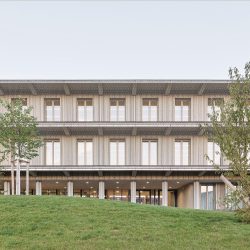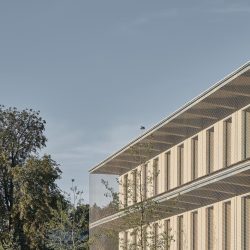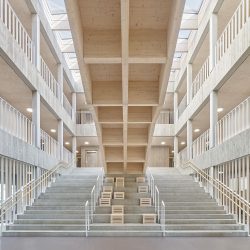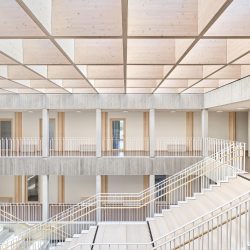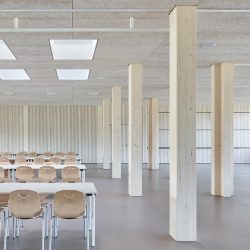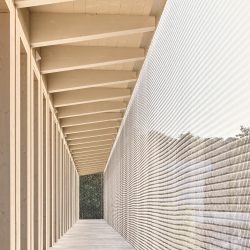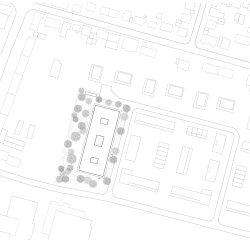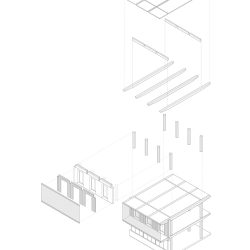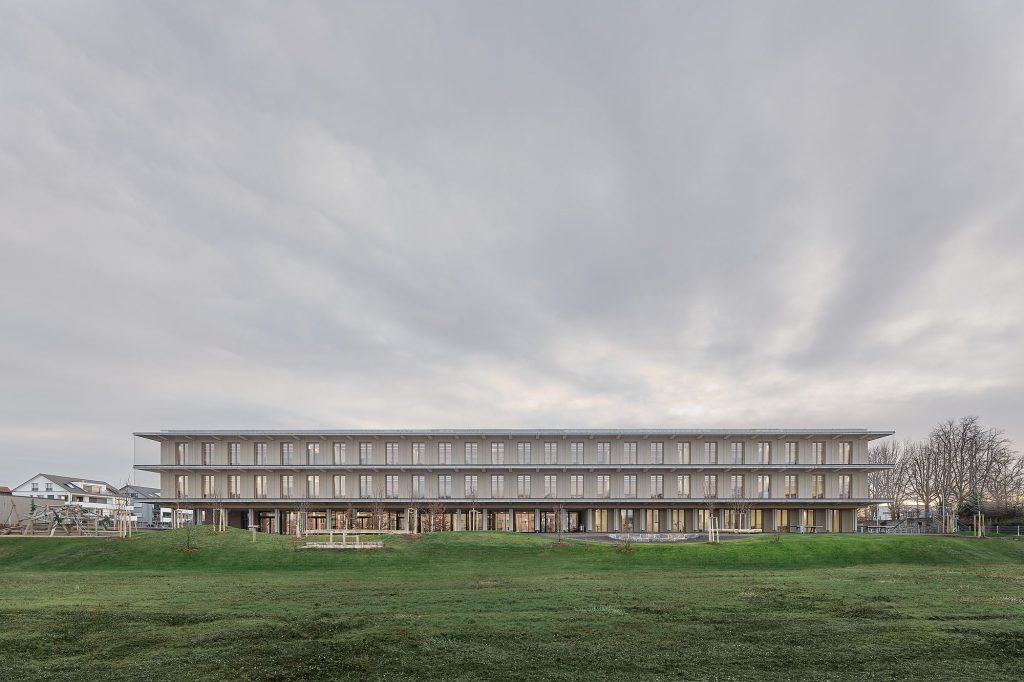
VON M . photos: © Zooey Braun
The Fuchshofschule in Ludwigsburg’s west is spatially designed to provide an appropriate place of learning and shared exchange for various large parts of the school community. The new school building, which emerged from a competition, now extends northwards from Fuchshofstraße. Based on the design image of a filled bookshelf on a playground, it was possible to transfer this ideal of school learning between the imparting of knowledge and social interaction into a wooden hybrid building. The three ceiling slabs cantilever out like shelves, offering the school community space for individual filling in the middle of a flowing outdoor area.
For the new primary school in Ludwigsburg, a school building had to be developed that both complies with current standards regarding its carbon emissions and offers the necessary rooms for contemporary learning concepts in all-day operation. In addition to meeting places for the community, venues for performances and a refectory, communication-promoting rooms for the school staff, the actual learning clusters as well as the rooms for all-day care, music, handicraft and inclusion rooms were to be provided. Together with the school community, it was thus possible to develop a school in a timber hybrid construction that enables learning in different learning groups, communicative togetherness and individualization.
While the ground floor accommodates the rooms for the teaching staff, a communicative community zone around the central open staircase to the upper floors and the refectory, the learning clusters are found on the upper floors. All classrooms are connected to the perimeter arcade-like cantilevers by at least three French doors. They can be used for short breaks and allow a quick and uncomplicated walk into the fresh air. A wire mesh serves as fall protection and at the same time lets plenty of daylight into the classrooms.
Interior cores house all the necessary facilities, such as the sanitary facilities, and their boarded concrete surfaces reflect the building material wood. Each cluster can be subdivided again by a glass wall so that different learning situations can be tried out and reconfigured again and again. The rooms for all-day care are located on the first floor, while the music, work and inclusion rooms are located on the second floor.
Text by David Kasparek / translation VON M
_



